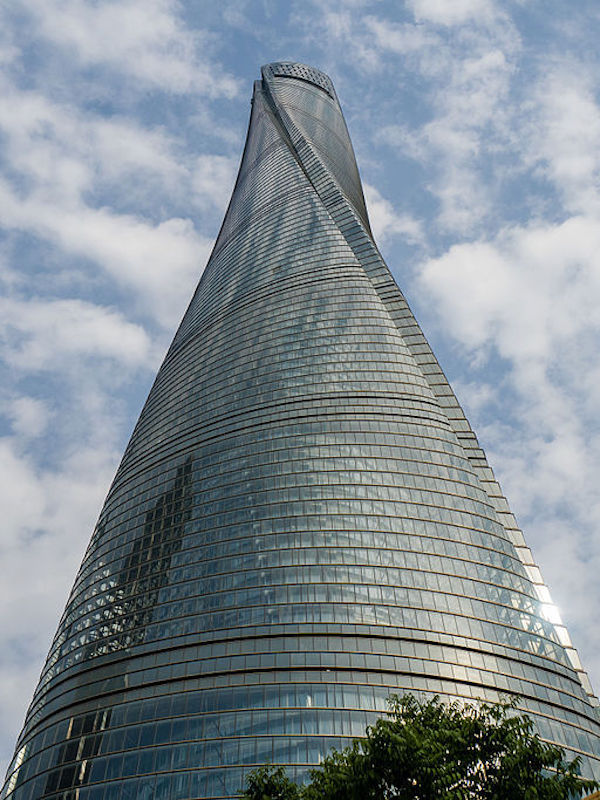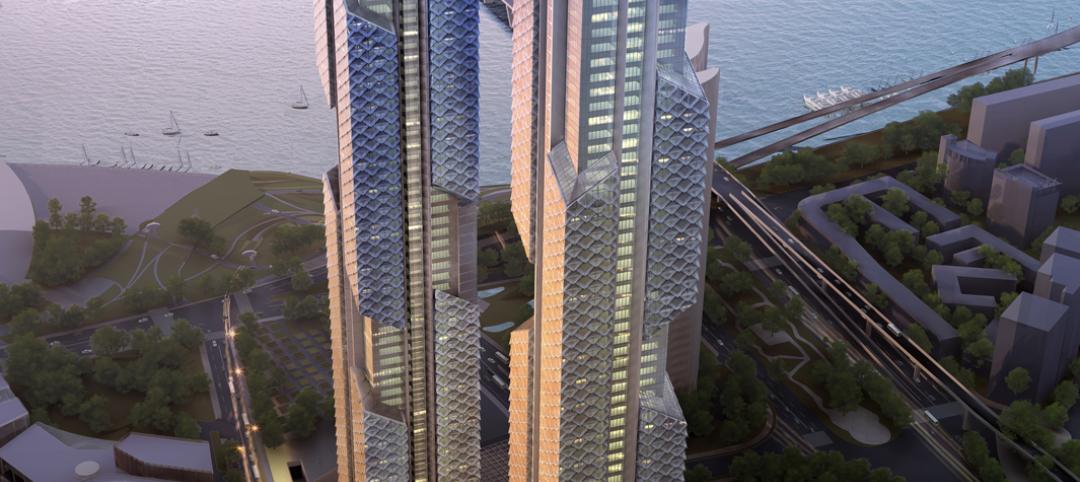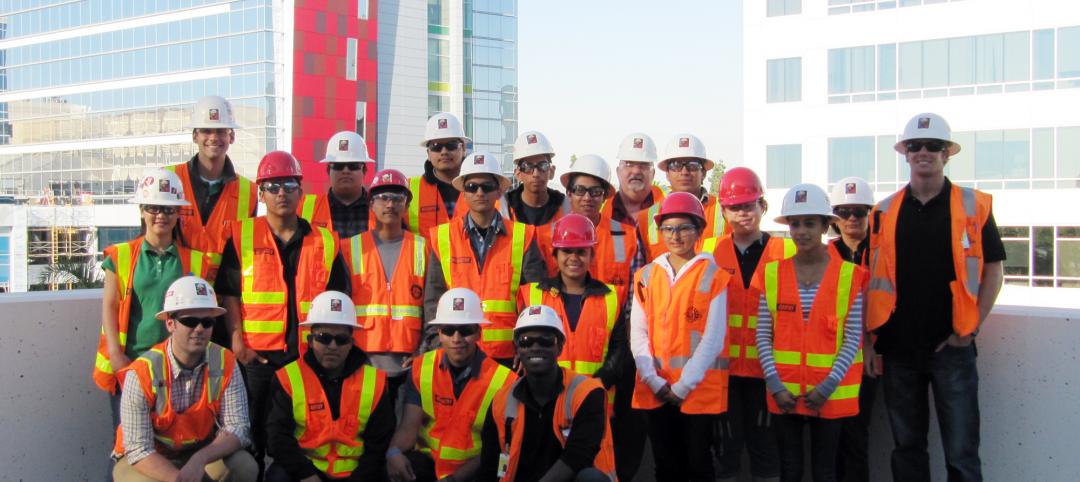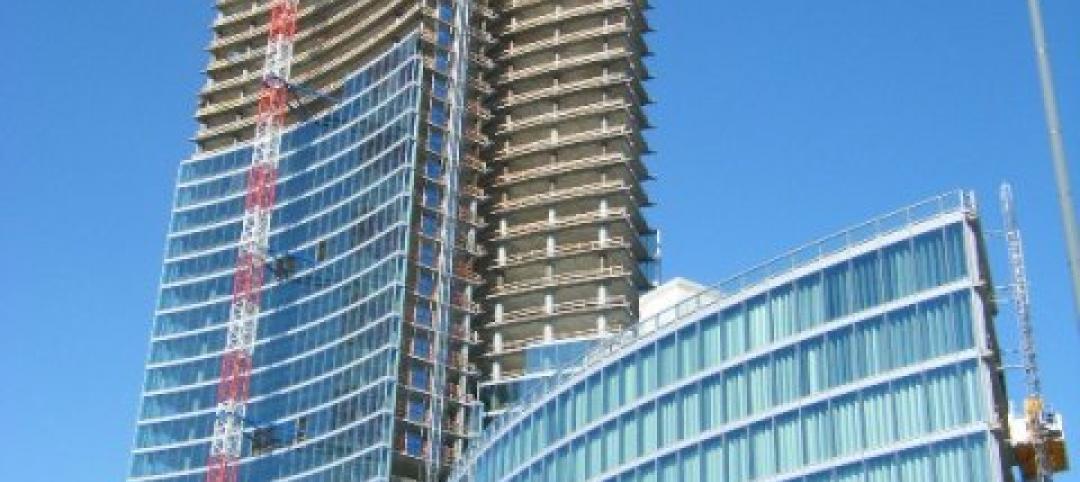The recently completed Gensler-designed Shanghai Tower in China, at 2,073 feet, lays claim to being the world’s second-tallest building, behind the 2,717-foot-tall Burj Khalifa in Dubai, according to the Council on Tall Buildings and Urban Habitat (CTBUH).
The completion of the $2.4 billion Shanghai Tower also bumps from the ranks of the 10 tallest buildings the 1,451-foot-tall Willis Tower in Chicago, which had been a mainstay on that list for more than four decades.
The twisty-shaped Shanghai Tower, with 121 stories above ground and five beneath, and a total area of 538,000 square meters, is one of three supertall buildings—the others being the Jim Mao Tower and the Shanghai World Financial Center—in the Lujiazui neighborhood in the Pudong commercial district.
Its podium features 50,000 sf of floor area for retail, as well as 19,000 sf that can be divided into three separate rooms for large-scale events, according to Gensler’s website.
The building took six years to complete, and required 1,079 concrete and steel piles to be driven into the ground for support, according to gizmag.com To get to the building’s highest point, occupants can use one of 106 Mitsubishi-desiged elevators that travel up to 40 miles per hour.
Shanghai Tower’s position among the world’s tallest buildings, however, could be shortlived, as the 3,303-foot-tall Jeddah Tower in Saudi Arabia is scheduled to open in 2020. Both the Jeddah Tower and Burj Khalifa were designed by Adrian Smith.
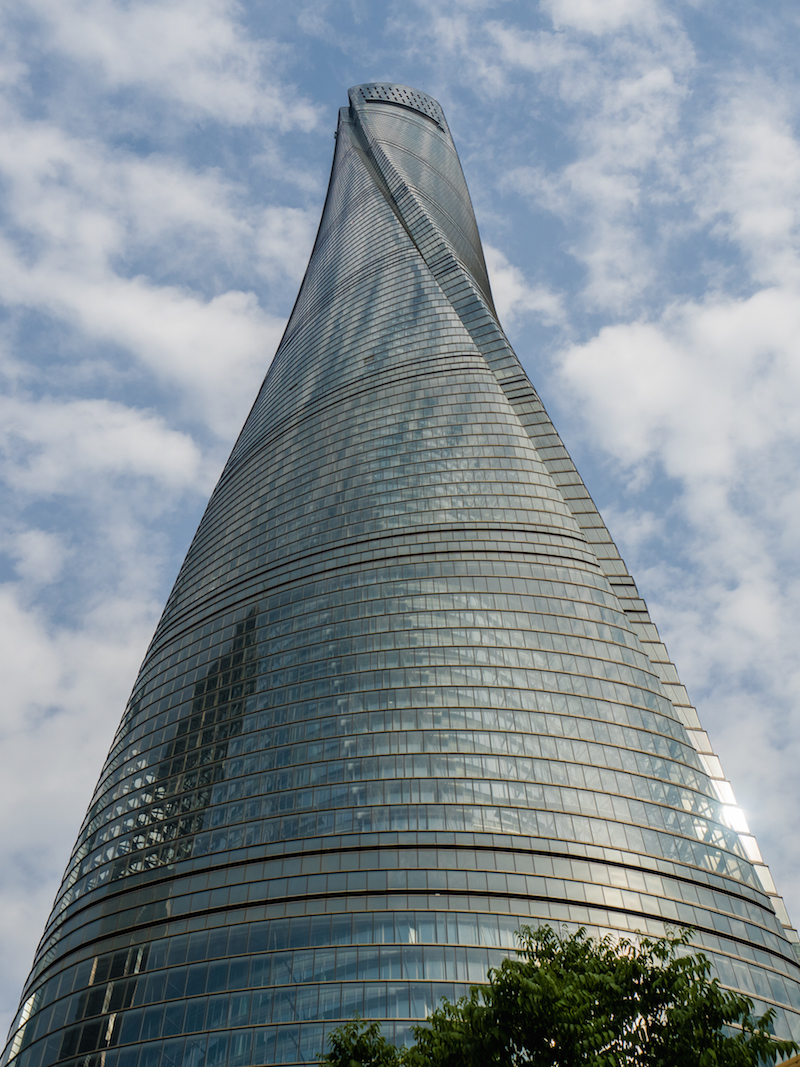 Photo: Ermell via Wikimedia Commons
Photo: Ermell via Wikimedia Commons
Related Stories
| May 24, 2012
2012 Reconstruction Awards Entry Form
Download a PDF of the Entry Form at the bottom of this page.
| May 15, 2012
One World Trade Center goes to new height of sustainability
One of the biggest challenges in developing this concrete mixture was meeting the Port Authority of New York/New Jersey’s strict requirement for the replacement of cement.
| May 14, 2012
SOM to break ground on supertall structure in China
The 1,740-feet (530-meter) tall tower will house offices, 300 service apartments and a 350-room, 5-star hotel beneath an arched top.
| May 14, 2012
Adrian Smith + Gordon Gill Architecture design Seoul’s Dancing Dragons
Supertall two-tower complex located in Seoul’s Yongsan International Business District.
| May 1, 2012
Time-lapse video: World Trade Center, New York
One World Trade Center, being built at the site of the fallen twin towers, surpassed the Empire State Building on Monday as the tallest building in New York.
| Apr 27, 2012
China Mobile selects Leo A Daly to design three buildings at its new HQ
LEO A DALY, in collaboration with Local Design Institute WDCE, wins competition to design Phase 2, Plot B, of Campus.
| Apr 25, 2012
McCarthy introduces high school students to a career in construction
High school students from the ACE Mentoring Program tour the new CHOC Children’s Patient Tower in Orange, Calif.
| Apr 25, 2012
J.C. Anderson selected for 50,000-sf build out at Chicago’s DePaul University
The build-out will consist of the construction of new offices, meeting rooms, video rooms and a state-of-the-art multi-tiered Trading Room.
| Apr 24, 2012
ULI Real Estate Consensus Forecast, projects improvements for the real estate industry through 2014
Survey is based on opinions from 38 of the nation’s leading real estate economists and analysts and suggests a marked increase in commercial real estate activity, with total transaction volume expected to rise from $250 billion in 2012 to $312 billion in 2014.
| Apr 23, 2012
Innovative engineering behind BIG’s Vancouver Tower
Buro Happold’s structural design supports the top-heavy, complex building in a high seismic zone; engineers are using BIM technology to design a concrete structure with post-tensioned walls.


